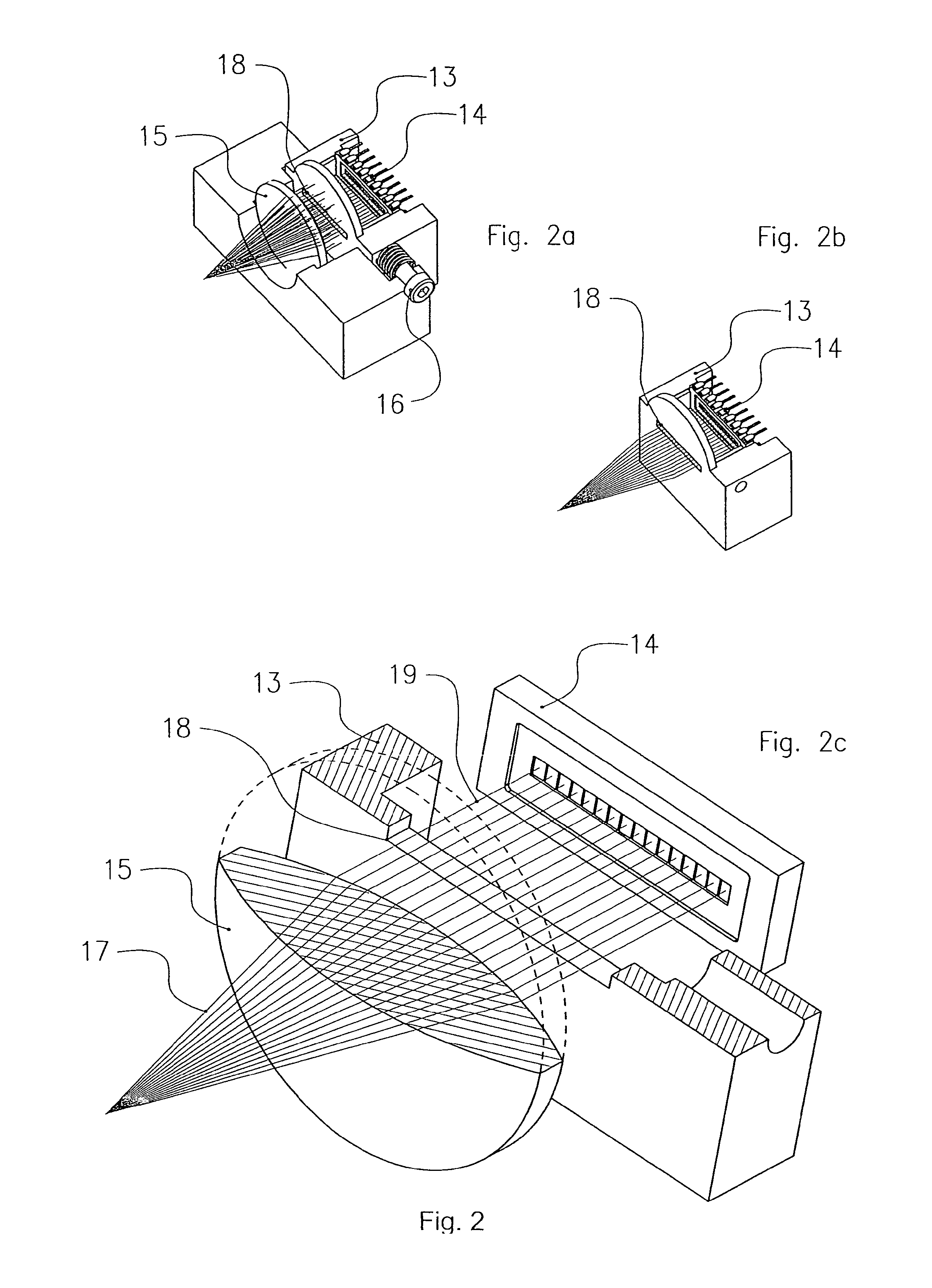Method and device of compensating scattering light signals generated by light interaction with particles or biological cells moving in fluid currents, such as in flow cytometry
a scattering light and signal technology, applied in the field of optical measurements of scattering lights, can solve the problems of poor total angular resolution and limited number of detector elements forming said devices
- Summary
- Abstract
- Description
- Claims
- Application Information
AI Technical Summary
Benefits of technology
Problems solved by technology
Method used
Image
Examples
Embodiment Construction
[0020]With reference to the accompanying FIG. 1, a perspective view of a preferred embodiment of the device according to the present invention is shown, in which the following component parts may be identified: a LED light source 11; a flow cell 12 (e.g. formed by means of a cell, model 151-051, made by Helma Italia Srl), a light collecting lens 15; a light detector 14 (e.g. formed by means of a CCD type detector), the supporting element 13 for said detector 14; means for adjusting the position of said supporting element 13, preferably comprising a position adjusting screw 16.
[0021]Said LED light source 11 comprises a light emitting element formed, for example, by means of a lamp, an individual or multiple LED, a laser diode or an ion laser device—adapted to emit a light beam and one or more lens forming the optical system to concentrate and focus said beam inside said flow cell 12, specifically on the particles carried by the conveying solution flow. Said light detector 14 preferab...
PUM
| Property | Measurement | Unit |
|---|---|---|
| size | aaaaa | aaaaa |
| diameter | aaaaa | aaaaa |
| angles | aaaaa | aaaaa |
Abstract
Description
Claims
Application Information
 Login to View More
Login to View More - R&D
- Intellectual Property
- Life Sciences
- Materials
- Tech Scout
- Unparalleled Data Quality
- Higher Quality Content
- 60% Fewer Hallucinations
Browse by: Latest US Patents, China's latest patents, Technical Efficacy Thesaurus, Application Domain, Technology Topic, Popular Technical Reports.
© 2025 PatSnap. All rights reserved.Legal|Privacy policy|Modern Slavery Act Transparency Statement|Sitemap|About US| Contact US: help@patsnap.com



